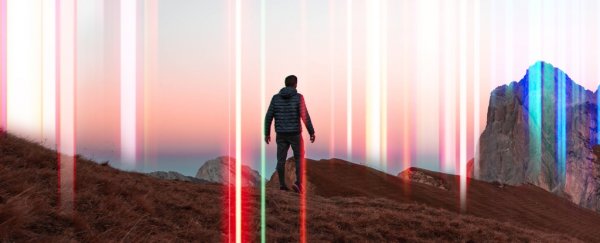Even though we have not found any evidence of extraterrestrial life so far, that's not to say we shouldn't be prepared for the day when that could change.
After all, many scientists think that alien life is a distinct possibility – if not an outright probability.
While we are yet to turn up a whisper of hard evidence to support the hypothetical existence of life beyond Earth, we are nonetheless always looking for it. If or when we ever do find that evidence, though – or even just begin to piece together the first, incremental traces of it – we need to be ready, NASA scientists say.
In a new scientific commentary – led by none other than the space agency's chief scientist, James Green – NASA researchers make the case for why we need to establish a framework for reporting evidence of extraterrestrial life.
"Our generation could realistically be the one to discover evidence of life beyond Earth," the team writes. "With this privileged potential comes responsibility."
According to the researchers, the discovery of alien life by humanity is unlikely to be a yes-or-no, all-or-nothing event.
Rather, it's more probable that the detection of extraterrestrial life will be a drawn-out, evolving process of scientific investigation and discovery – and the sooner that's understood by everybody, the better.
"History includes many claims of life detection that later proved incorrect or ambiguous when considered in exclusively binary terms," the researchers explain.
"If, instead, we recast the search for life as a progressive endeavor, we convey the value of observations that are contextual or suggestive but not definitive and emphasize that false starts and dead ends are an expected part of a healthy scientific process."
Such is the complexity of this kind of multi-tiered, qualitative assessment, that we need a progressive scale to measure and chart new discoveries – something much like the technology readiness level (TRL) scale that NASA itself uses to track the progress of spaceflight instruments, all the way from concept to implementation in actual missions.
In the context of astrobiological detections of life, NASA says we could use an analogue: a "confidence of life detection" (CoLD) scale, with the lowest levels of the scale focusing on the initial identification of potential biosignatures, with higher levels reserved for more specific and certain measurements of the subject.
Such a nuanced scale – tracking potential life detections against a series of objective, progressively more demanding benchmarks – would help place all purported biosignatures in a standardized context, helping the research community (and the broader community following their work) to interpret whatever new findings scientists report.
"Establishing best practices for communicating about life detection can serve to set reasonable expectations on the early stages of a hugely challenging endeavor, attach value to incremental steps along the path, and build public trust by making clear that false starts and dead ends are an expected and potentially productive part of the scientific process," the researchers write.
"Whatever the outcome of the dialogue, what matters is that it occurs… In doing so, we can only become more effective at communicating the results of our work, and the wonder associated with it."
The perspective has been published in Nature.
